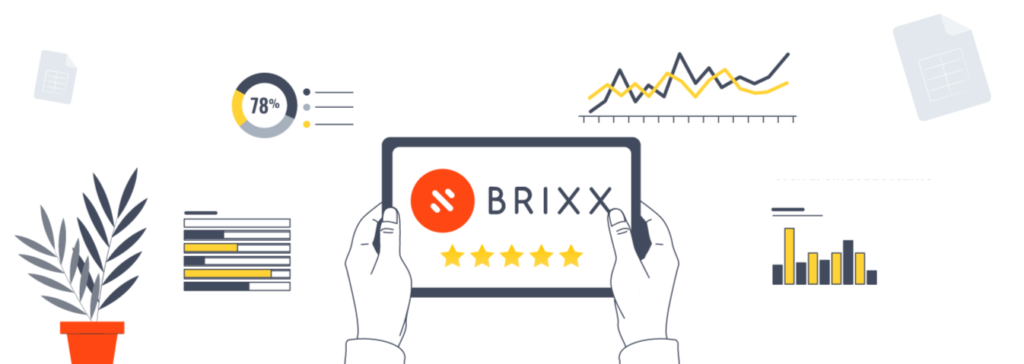

Effective financial planning is absolutely essential for a business’ sustained success. One such tool that can help to empower your business is the 3-way forecast.
In this article, we delve into the importance of a 3-way forecast, taking a look at its components, exploring its strategic applications, and highlighting its pivotal role in shaping a resilient and forward-thinking business strategy.
Get started with our forecasting software so that you can plan your business' futureEasily prepare your 3-way forecast with Brixx
What is a 3-way forecast?
A 3-way forecast is a financial projection that integrates three essential financial reports: the Income Statement (or Profit and Loss statement), the Balance Sheet, and the Cash Flow Statement. Each of these components provides distinct insights into a company’s financial health, allowing for a holistic view of its present and future financial position.
Income statement (profit and loss statement)
The income statement outlines a company’s revenues, expenses, and profits over a specific period. It provides a snapshot of operational performance and helps in assessing the profitability of the business.
Balance sheet
The balance sheet provides an overview of a company’s assets, liabilities, and equity at a specific point in time. It illustrates the business’ financial position and helps in understanding its solvency and liquidity.
Cash flow statement
The cash flow statement tracks the inflows and outflows of cash over a specified period. It includes operating, investing, and financing activities, offering insights into a company’s ability to generate and manage cash.
By combining these three statements in a 3-way forecast, businesses gain a comprehensive understanding of their financial situation. This forecasting approach is invaluable for strategic planning, risk management, and making informed decisions to ensure the sustainability and growth of the business.
When do you need a 3-way forecast?
There are many situations in which your business will need a 3-way forecast. A 3-way forecast becomes particularly crucial when businesses need to make informed decisions, plan strategically, and ensure financial stability.
Here are a small selection of scenarios where having a 3-way forecast is highly beneficial:
Strategic planning
When developing long-term business strategies, a 3-way forecast provides a comprehensive financial outlook, helping to align financial plans with overall business goals.
Startup planning
New businesses often use 3-way forecasts to project financial performance and demonstrate viability to potential investors.
Fundraising and investments
When seeking external funding or making investment decisions, a 3-way forecast is essential to showcase the growth potential and sustainability of the business.
Risk management
In times of economic uncertainty or industry fluctuations, a 3-way forecast helps identify potential risks and supports the development of contingency plans to mitigate financial challenges.
Loan applications
Financial institutions often require businesses to submit comprehensive financial projections when applying for loans. A 3-way forecast provides the necessary insights into a company’s ability to repay debt.
Operational decision making
Day-to-day operational decisions can benefit from a 3-way forecast by providing a real-time understanding of cash flow, profitability, and financial position.
In essence, a 3-way forecast is a versatile tool that proves valuable in various business scenarios, guiding decision-makers toward sound financial management and strategic success.
How does a 3-way forecast help with financial planning?
A 3-way forecast plays a crucial role in financial planning by providing a comprehensive and integrated view of a company’s financial position.
Here are several ways in which a 3-way forecast aids in financial planning:
Holistic overview
When combining the income statement, balance sheet, and cash flow statement, a 3-way forecast offers a holistic snapshot of a company’s financial health. This comprehensive view allows for a better informed and nuanced understanding of the financial landscape.
Revenue and expense projection
The income statement component of the 3-way forecast projects future revenues and expenses. This helps in estimating the profitability of the business and identifying areas for cost management or revenue growth.
Balance sheet projections
By forecasting the balance sheet, businesses can anticipate changes in assets, liabilities, and equity. This aids in assessing the company’s financial position and understanding how various financial decisions impact overall stability.
Cash flow management
The cash flow statement in the 3-way forecast helps in projecting how cash moves in and out of the business. This is crucial for managing day-to-day operations, ensuring there’s enough liquidity to cover expenses, and avoiding any cash flow crisis.
Budgeting and resource allocation
With insights from the 3-way forecast, businesses can create realistic budgets and allocate resources effectively.
Scenario analysis
Financial planning often involves considering different scenarios and assessing their impact. A 3-way forecast allows for scenario analysis, helping businesses understand the potential outcomes of various decisions or external factors.
Debt management
For businesses with debt obligations, a 3-way forecast assists in managing and planning for debt repayments. It helps evaluate the impact of debt on cash flow and overall financial health.
In summary, a 3-way forecast is an invaluable tool for businesses engaged in financial planning.
The best way to prepare a 3-way forecast
Preparing a 3-way forecast involves a structured approach and a thorough understanding of the financial dynamics of your business. Here are the key elements to help you get started in preparing your statement:
- Gather any historical data, including income statements, balance sheet, and cash flow statements
- Understand and determining your time frame to forecast
- Create the income statement forecast
- Create the balance sheet forecast
- Create the cash flow statement forecast
- Conduct any sensitivity analysis
- Document any potential assumptions and ensure justification of these assumptions
- Align your forecast with broader business objectives
- Use a financial forecasting tool to streamline the entire process
- Update your forecast regularly
- Always seek professional advice
- Monitor and revise over time
Common 3-way forecasting challenges
There are a variety of complexities to consider when creating a 3-way forecast. Some can present challenges for your business.
Here are some common challenges associated with preparing a 3-way forecast:
Data accuracy concerns
Is the data accurate and complete? Any inaccuracies can lead to flawed forecasts.
Assumption risks
Are the assumptions made accurate? Will unforeseen conditions alter the accuracy of the forecast?
Cash flow timings
Are there any timing differences between recognized revenue and incurred expenses? Accuracy is required for cash flow forecasts.
Seasonality issues
Is your business seasonal? Seasonal variations can introduce uncertainties into the forecasting process.
External dependencies
Is your business dependent on any factors such as interest or exchange rates? Predicting these can influence your forecast.
Lack of expertise
Is your business new, or are you a startup not quite ready to launch yet? Without dedicated financial expertise, you may struggle to create your 3-way forecast. Ensure expert advice is received.
Technology and software limitations
Inadequate financial modelling tools or outdated software may limit the ability to create sophisticated and dynamic 3-way forecasts. Use an up to date tool like Brixx.
Overlooking contingency planning
Have you performed the necessary scenario analysis? Failing to incorporate contingency plans in the forecast can be a challenge.
Addressing these challenges requires a proactive and adaptive approach to financial planning. Regular monitoring, scenario analysis, and a commitment to refining the forecasting process can enhance the accuracy and effectiveness of 3-way forecasts.
Get started on your 3-way forecast with Brixx
Now that you know what is required for your 3-way forecast, you can get started. Embark on your financial forecasting journey with Brixx, our reliable ally to your 3-way forecasting needs! Use the included tools to create comprehensive 3-way forecasts that integrate the Income Statement, Balance Sheet, and Cash Flow Statement.
Start shaping your financial destiny today; explore the possibilities and potentials with Brixx as your trusted companion in the realm of financial planning.
















